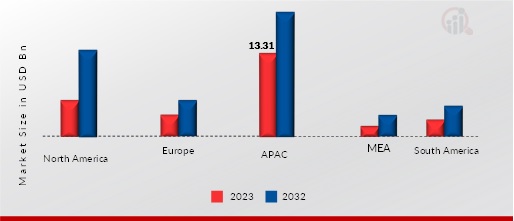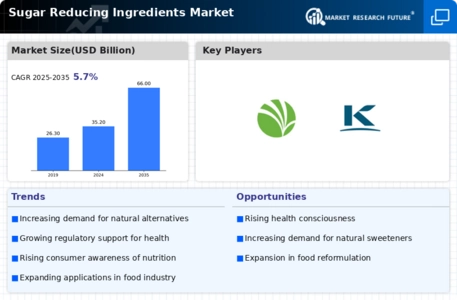Based on region, the Sugar Reducing Ingredients Market has been segmented into North America, Europe, Asia-Pacific, and the South America. The Asia-Pacific region accounted for the largest market share of 37.64% in 2023 and is likely to register a CAGR of 5.97% during the projected period. The North America region is the second largest market with a share of 26.59% in 2023.
Around 227 million people in Asia-Pacific are diagnosed with type 2 diabetes, and 50% among them aren’t aware of the long-term implications of the disease, stated the managing director of BENO, Asia Pacific in the Food & Beverage Asia magazine. However, consumers are shifting to healthy lifestyle habits, the article further elaborated that the survey conducted among Singapore consumers has highlighted that around 66.67% of them are inclined towards adopting a healthier lifestyle and consumption habits. This trend is further fueled by the outbreak of the COVID-19 pandemic, making consumers conscious of the ingredients in food and drink products.
The Asia-Pacific region consists of China, India, Japan, Australia & New Zealand, and the Rest of Asia-Pacific. Around 227 million people in Asia-Pacific are diagnosed with type 2 diabetes, and 50% among them aren’t aware of the long-term implications of the disease, stated the managing director of BENO, Asia Pacific in the Food & Beverage Asia magazine. However, consumers are shifting to healthy lifestyle habits, the article further elaborated that the survey conducted among Singapore consumers has highlighted that around 66.67% of them are inclined towards adopting a healthier lifestyle and consumption habits.
This trend is further fueled by the outbreak of the COVID-19 pandemic, making consumers conscious of the ingredients in food and drink products.
The major countries studied are the U.S., Canada, Mexico, Germany, France, the UK, Italy, Spain, China, Japan, India, Australia and New Zealand, South America, the Middle East, and Africa.
Figure 3: SUGAR REDUCING INGREDIENTS MARKET SHARE, BY REGION, 2023 & 2032 (USD Billion)

Source: Secondary Research, Primary Research, MRFR Database, and Analyst Review







Leave a Comment